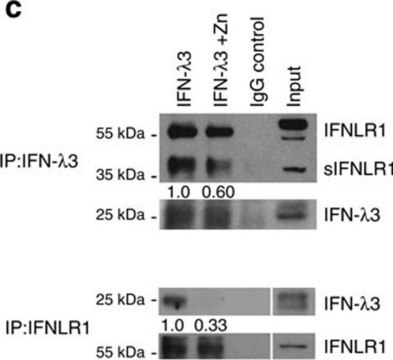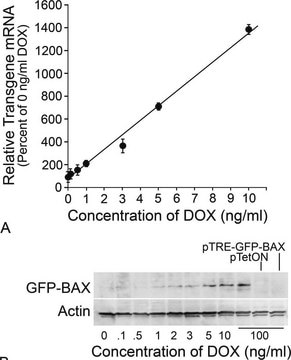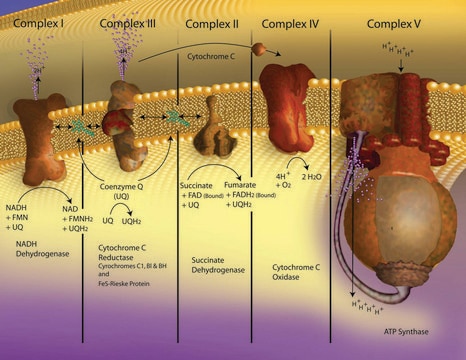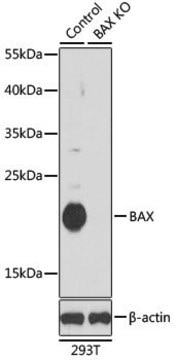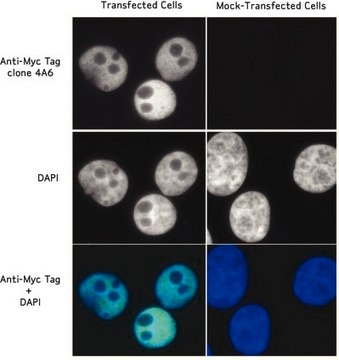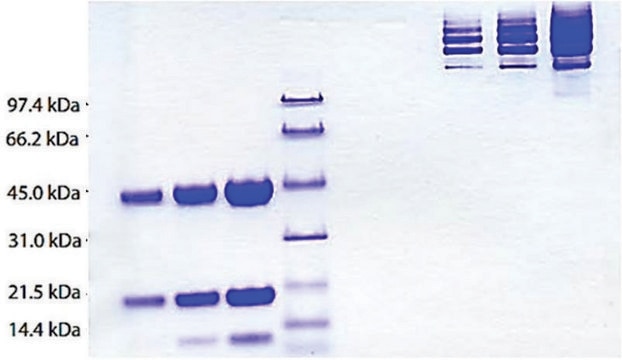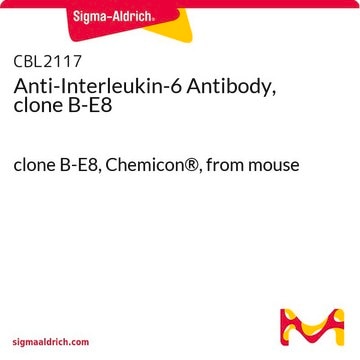General description
We are committed to bringing you greener alternative products, which adhere to one or more of The 12 Principles of Green Chemistry.This antibody is Preservative-free, produced without the harm or sacrifice of animals and exceptionally stable to allow for ambient shipping and storage if needed and thus aligns with "Waste Prevention", "Designing Safer Chemicals" and "Design for Energy Efficiency".
Click here for more information.
ZooMAb® antibodies represent an entirely new generation of recombinant monoclonal antibodies.Each ZooMAb® antibody is manufactured using our proprietary recombinant expression system, purified to homogeneity, and precisely dispensed to produce robust and highly reproducible lot-to-lot consistency. Only top-performing clones are released for use by researchers. Each antibody is validated for high specificity and affinity across multiple applications, including its most commonly used application. ZooMAb® antibodies are reliably available and ready to ship when you need them.
Specificity
Clone 1K8 is a ZooMAb® Rabbit recombinant monoclonal antibody that specifically detects Bcl-2. It targets an epitope within 15 amino acids from the N-terminal region.
Immunogen
KLH-conjugated linear peptide corresponding to 15 amino acids from the N-terminal region of human Bcl-2.
Application
Quality Control Testing
Evaluated by Western Blotting in KG-1 cell lysate.
Western Blotting Analysis: A 1:10,000 dilution of this antibody detected Bcl-2 in KG-1 cell lysate.
Tested applications
Western Blotting Analysis: A 1:10,000 dilution from a representative lot detected Bcl-2 in THP-1 cell lysate.
Affinity Binding Assay: A representative lot of this antibody bound Bcl-2 with a KD of 1x 10-12 in an affinity binding assay.
Immunocytochemistry Analysis: A 1:100 dilution from a representative lot detected Bcl-2 in THP-1 cells.
Immunohistochemistry (Paraffin) Analysis: A 1:100 dilution from a representative lot detected Bcl-2 in human thyroid and human spleen tissue sections.
Note: Actual optimal working dilutions must be determined by end user as specimens, and experimental conditions may vary with the end user
Anti-Bcl-2, clone 1K8 ZooMAb®, Cat. No. ZRB1512, is a recombinant Rabbit monoclonal antibody that detects Bcl-2 and is tested for use in Affinity Binding Assay, Immunocytochemistry, Immunohistochemistry (Paraffin), and Western Blotting.
Target description
Apoptosis regulator Bcl-2 (UniProt: P10415; also known as Bcl2) is encoded by the BCL2 gene (Gene ID: 596) in human. The members of Bcl-2 family of proteins are known to be involved in either blocking or promoting apoptotic cell death. They act at checkpoints upstream of caspases and share regions of homology termed BH (Bcl Homology) domains. All members of the Bcl-2 family (except Bad and Bid) contain a hydrophobic C-terminus (transmembrane domain), which helps them to attach to membrane. Bcl-2 and other anti-apoptotic members of the Bcl-2 family are located in the outer mitochondrial membrane. Bcl-2 is a single-pass membrane protein that is localized in endoplasmic reticulum, nucleus, and mitochondrial membrane. In mitochondria it is especially enriched at contact sites where the inner and outer membranes come in close proximity. It is reported to counteract the action of pore forming Bax protein. Its transmembrane domain is localized in amino acids 212-233. It contains four BH motifs. BH1 (aa 10-30), BH2 (aa 93-107), and BH4 (aa 136-155) are required for its anti-apoptotic activity. Bcl-2 can be present in cells as homodimer or it can form heterodimers with BAX, BAD, BAK and Bcl-X(L). Heterodimerization with BAX requires intact BH1 and BH2 motifs and is necessary for anti-apoptotic activity. Bcl-2 is shown to suppress apoptosis by controlling the mitochondrial membrane permeability. It functions in a feedback loop system with caspases and is shown to inhibit caspase activity either by preventing the release of cytochrome c from the mitochondria and/or by binding to the apoptosis-activating factor (APAF-1). During apoptosis it is proteolytically cleaved by caspases and the cleaved protein lacking the BH4 motif displays pro-apoptotic activity. Following growth factor stimulation, Bcl-2 can undergo phosphorylation at serine 70 by PKC, which is required for its anti-apoptotic activity. This ZooMAb® recombinant monoclonal antibody, generated by our propriety technology, offers significantly enhanced specificity, affinity, reproducibility, and stability over conventional monoclonals.
Physical form
Purified recombinant rabbit monoclonal antibody IgG, lyophilized in PBS with 5% Trehalose, normal appearance a coarse or translucent resin. The PBS/trehalose components in the ZooMAb® formulation can have the appearance of a semi-solid (bead like gel) after lyophilization. This is a normal phenomenon. Please follow the recommended reconstitution procedure in the data sheet to dissolve the semi-solid, bead-like, gel-appearing material. The resulting antibody solution is completely stable and functional as proven by full functional testing. Contains no biocide or preservatives, such as azide, or any animal by-products. Larger pack sizes provided as multiples of 25 μL.
Reconstitution
300 μg/mL after reconstitution at 25 μL per vial. Please refer to guidance on suggested starting dilutions and/or titers per application and sample type.
Storage and Stability
Recommend storage of lyophilized product at 2-8°C; Before reconstitution, micro-centrifuge vials briefly to spin down material to bottom of the vial; Reconstitute each vial by adding 25 μL of filtered lab grade water or PBS; Reconstituted antibodies can be stored at 2-8°C, or -20°C for long term storage. Avoid repeated freeze-thaws.
Legal Information
ZooMAb is a registered trademark of Merck KGaA, Darmstadt, Germany
Disclaimer
Unless otherwise stated in our catalog or other company documentation accompanying the product(s), our products are intended for research use only and are not to be used for any other purpose, which includes but is not limited to, unauthorized commercial uses, in vitro diagnostic uses, ex vivo or in vivo therapeutic uses or any type of consumption or application to humans or animals.

